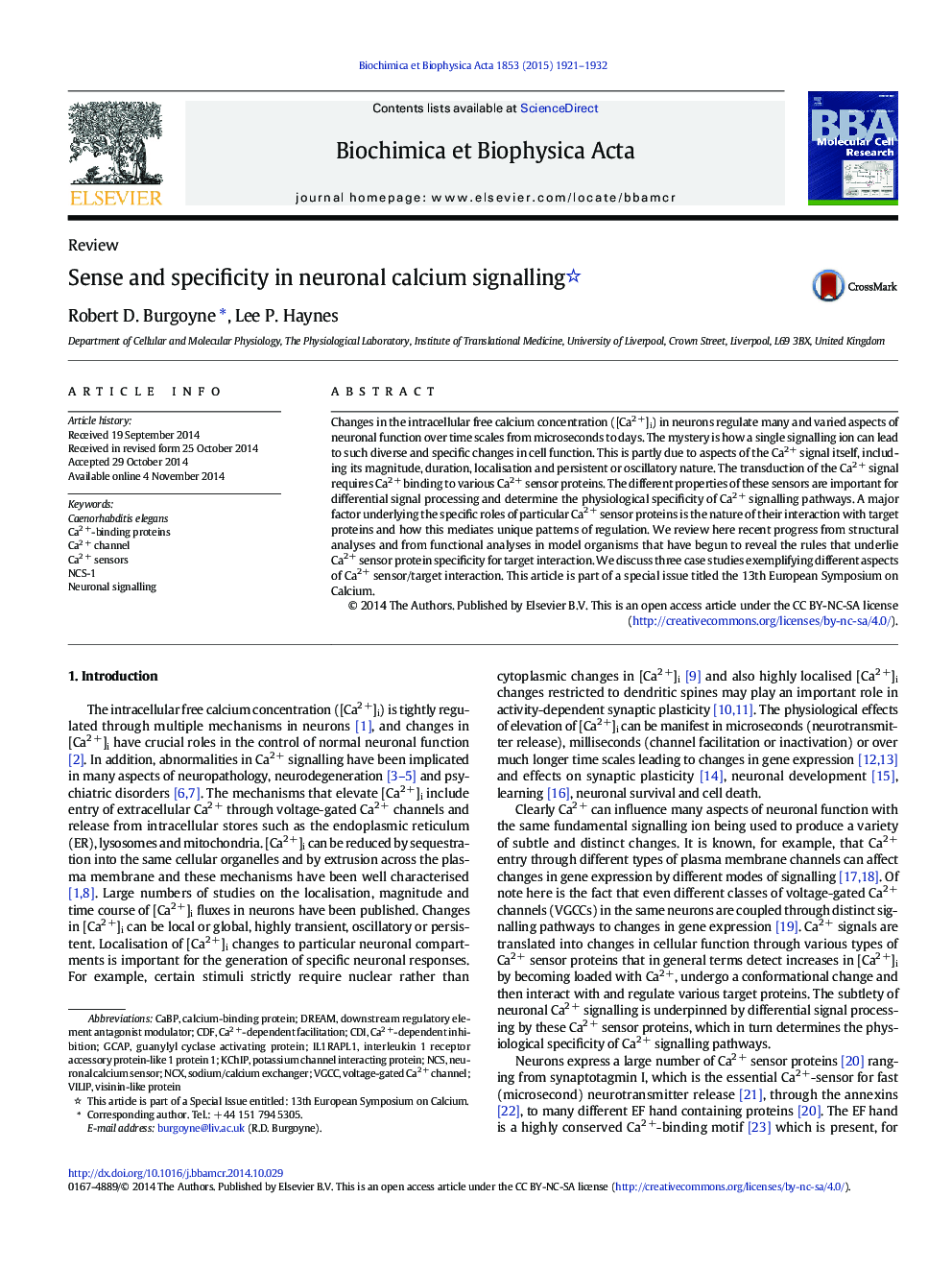| Article ID | Journal | Published Year | Pages | File Type |
|---|---|---|---|---|
| 10801878 | Biochimica et Biophysica Acta (BBA) - Molecular Cell Research | 2015 | 12 Pages |
Abstract
Changes in the intracellular free calcium concentration ([Ca2Â +]i) in neurons regulate many and varied aspects of neuronal function over time scales from microseconds to days. The mystery is how a single signalling ion can lead to such diverse and specific changes in cell function. This is partly due to aspects of the Ca2Â + signal itself, including its magnitude, duration, localisation and persistent or oscillatory nature. The transduction of the Ca2Â + signal requires Ca2Â + binding to various Ca2Â + sensor proteins. The different properties of these sensors are important for differential signal processing and determine the physiological specificity of Ca2Â + signalling pathways. A major factor underlying the specific roles of particular Ca2Â + sensor proteins is the nature of their interaction with target proteins and how this mediates unique patterns of regulation. We review here recent progress from structural analyses and from functional analyses in model organisms that have begun to reveal the rules that underlie Ca2Â + sensor protein specificity for target interaction. We discuss three case studies exemplifying different aspects of Ca2Â + sensor/target interaction. This article is part of a special issue titled the 13th European Symposium on Calcium.
Keywords
Related Topics
Life Sciences
Biochemistry, Genetics and Molecular Biology
Biochemistry
Authors
Robert D. Burgoyne, Lee P. Haynes,
